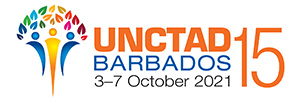Soaring interest payments are squeezing budgets, forcing governments to choose between repaying creditors and funding essential services.
Developing countries are sinking deeper into a debt-driven development crisis. Their external debt – money owed to foreign creditors – has quadrupled in two decades to a record $11.4 trillion in 2023, equivalent to 99% of their export earnings.
A mix of factors has fuelled this surge, including increased borrowing for development projects, volatile commodity prices, and widening public deficits. The COVID-19 pandemic worsened the situation, as countries borrowed heavily to offset the economic fallout and fund public health measures.
While debt can be a vital tool for economic growth and development, it becomes a problem when repayment costs outpace a country’s capacity to pay. That is now the case for two thirds of developing countries.
Debt distress now looms over more than half of the 68 low-income countries eligible for the International Monetary Fund’s Poverty Reduction and Growth Trust – more than double the number in 2015.
High interest rates are worsening the burden. In 2023, developing nations paid $847 billion in net interest, a 26% increase from 2021. They borrowed internationally at rates two to four times higher than the United States and six to 12 times higher than Germany.
Defaulting on development: The real cost of debt
When governments must prioritize debt repayments over public services and investments, people pay the price. Schools are underfunded, hospitals lack supplies and infrastructure crumbles.
Yet, because existing debt workout mechanisms are inefficient and costly, most governments avoid default at all costs – even if it means sacrificing development goals and climate action.
As a result, countries may not default on their debt, but they default on their development.
In 2023, a historic 54 developing nations – nearly half in Africa – dedicated at least 10% of government funds to debt interest payments. Today, 3.3 billion people live in countries that spend more on debt payments than on health or education.
A defining moment for global debt reform
The 14th International Debt Management Conference, organized by UN Trade and Development (UNCTAD) from 17 to 19 March in Geneva, has gathered government officials, senior debt managers, experts from international organizations, academics, business leaders and civil society representatives to examine the drivers of the current debt-driven development crisis and explore solutions.
The discussions will focus on building resilience, managing risks and navigating the complexities of global crises.
As the world heads toward the 4th International Conference on Financing for Development (FfD4), the UNCTAD debt management gathering will help shape the global financing for development agenda – of which debt is a critical element.
New debt management software
At the conference, UNCTAD will launch DMFAS 7, the latest version of its cutting-edge debt management software.
For over 45 years, the Debt Management and Financial Analysis System (DMFAS) has helped more than 80 institutions across 60 countries improve transparency, governance and economic stability.
As developing nations face record-high debt burdens, DMFAS 7 offers advanced tools to help them manage public debt effectively – without compromising development goals.
